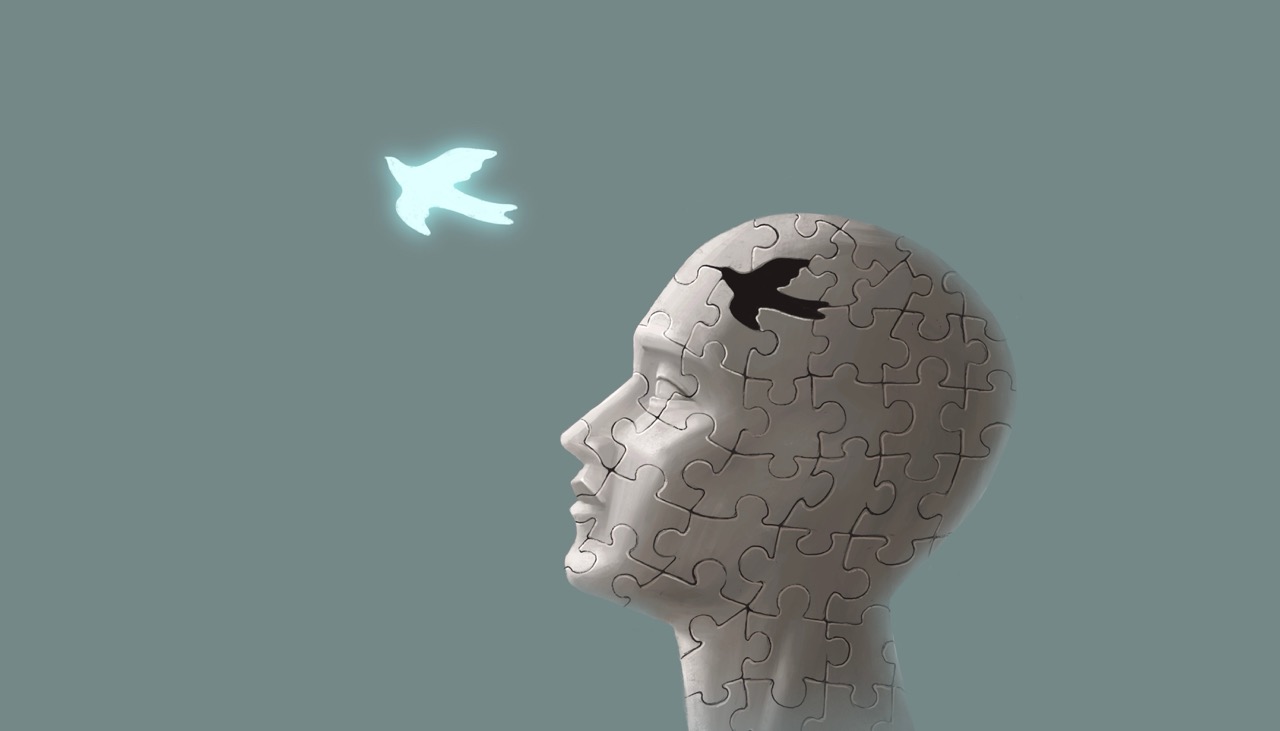Healing Without Closure
 Author:
Bob Livingstone
Author:
Bob Livingstone
 Co-Author:
Patrick Nagle
Co-Author:
Patrick Nagle
 Editor:
Sue Collier
Editor:
Sue Collier
 Reviewer:
Shivani Kharod, Ph.D.
Reviewer:
Shivani Kharod, Ph.D.
Closure is a comforting idea, but real healing rarely arrives with a clean ending. When life is fractured by loss, trauma, or unanswered questions, the desire for a tidy conclusion can add to the sense of disorientation. True healing begins not by chasing finality, but by honoring the depth of the experience and allowing pain to exist alongside progress.

The Fantasy of Finality
There is a natural longing for resolution. From childhood, the message is clear: every story has an ending, one where conflicts resolve and life moves forward. Books, movies, and cultural myths reinforce this, suggesting that healing must come with closure. But real life rarely follows such tidy arcs. Pain lingers. Questions remain unanswered. Healing unfolds without finality.
This longing for emotional closure is not foolish, but it is often misdirected. The deeper truth is that pain does not need to vanish in order for life to move forward. Acceptance becomes more powerful than answers. The fantasy of finality can trap people in cycles of rumination, waiting for an ending that never arrives [1]. Instead, healing asks for a shift from seeking resolution to seeking meaning.
Why Integration Beats Closure
Closure suggests a clean break, a point after which pain no longer touches anything. But emotional wounds don’t vanish on command. Healing is not about sealing off the past. It’s about integrating it, learning to carry it differently. Pain may return without warning. That does not mean healing has failed. It means the person is human.
Like the tides, emotions ebb and flow. Suppressing them is like trying to hold back the sea. Instead, healing means moving with the current. It means letting the past coexist with the present without defining it. This form of healing, quiet, steady, ongoing, is more realistic, and more powerful, than closure.
Integration acknowledges the truth of what happened without letting it control what happens next. It means allowing joy and grief to live in the same house. Over time, the memories soften, and the emotions become less sharp. Nothing is forgotten. But everything begins to adapt.
When Suppressing Pain Feels Necessary
In traumatic environments, suppressing pain isn’t weakness. It is survival. Dissociation, a mental escape from overwhelming emotion, helps people endure when there is no other option [2]. Children living through chronic trauma, or adults in abusive situations, may detach emotionally to preserve their functioning.
But long after the danger passes, dissociation can linger. The protective walls that once helped with survival may later stand in the way of connection [3]. What once served as emotional protection can become emotional isolation. Healing involves slowly and safely dismantling those defenses, rebuilding trust in the capacity to feel without falling apart. to cope now separate the person from connection, from self. Healing involves dismantling those walls slowly and safely, rebuilding trust in the capacity to feel without falling apart.
This transition can feel disorienting. Numbness once felt like safety. Feeling again can feel like danger. Therapy, body-based practices, and safe relationships help to reintegrate emotion at a pace that respects the body’s original need to shut down.
The Harmful Myth of “Moving On”
Modern culture often struggles to make space for lasting grief. When someone speaks openly about an old loss, discomfort or dismissiveness may follow. Clichéd condolences are offered, or quiet expectations emerge that the grief should be further along. The message is often unspoken but clear: sadness is acceptable only for a limited time.
Yet grief is not linear. There is no finish line. It loops back on itself, sometimes years later, stirred by memories or milestones [4]. This is not regression. It is simply the shape of loss. Just as love does not end, neither does grief. Accepting this truth helps build compassion inward and outward.
Internalizing the myth of moving on leads to judgment of natural emotional responses. It becomes easier to mistake recurring pain for failure. In reality, healing happens in layers. Some of those layers return not because something is wrong, but because capacity has grown. More space now exists to process what was once too overwhelming.
When Grief Rewrites Identity
Loss does not just change circumstances. It changes identity. After a rupture, the question arises: Who am I now, without this person, this role, this certainty? Healing involves reconstructing identity around the void, not ignoring it, but weaving it into the fabric of what comes next.
Support groups, therapy, and creative expression can help rebuild this sense of self. It is not about returning to who someone was. It is about creating something new and whole, shaped by both love and loss.
This reconstruction is deeply personal. Some find meaning in advocacy. Others in art, parenting, or solitude. Whatever path is chosen, the new identity honors what was while building something durable from it. The self is not erased. It evolves.
What Healing Without Closure Looks Like
This kind of healing is subtle. It might not look like much from the outside. There may still be tears on anniversaries, pangs of sadness at unexpected moments. But there is also laughter. Responses to pain grow more grounded. Memories still surface, but they no longer dictate emotional state.
Healing is not a dramatic transformation. It is a slow return to one’s own body, one’s own life. It is learning to hold history without being overwhelmed by it.
Small things become significant: waking up without dread, feeling calm in a once-triggering space, making plans again. These are victories. This is what real healing looks like.
Being Understood Without Closure
Peace often begins with being seen. No perfect explanation for grief is required. Sometimes, it is enough to be heard without being fixed. To be understood without needing resolution is deeply healing.
Pain is not meant to be carried in isolation. When others can sit with sorrow without rushing it away, a sense of wholeness begins to return.
Validation does not require resolution. There is no need to justify sadness to be worthy of empathy. The presence of a compassionate witness often brings more healing than any answer.
When Closure is Out of Reach
There are moments when it becomes clear that some things may never resolve, at least not in the way once hoped. In those moments, the priority becomes nurturing the self in the absence of resolution. These tools will not erase the past, but they can offer steadiness in the present. They are practical, flexible, and rooted in self-compassion.
Three Tools for Living Without Closure
- Develop Grounding Techniques: Use breathwork, tactile objects, or sensory routines to stay present when triggers arise. Grounding reorients the nervous system, offering safety in moments when emotions threaten to overwhelm [5].
- Redefine Safety: Build a life around people and places that nourish the nervous system. Set boundaries that protect healing. Over time, there is a return to the right to feel safe in one’s own skin.
- Acknowledge Progress: Notice the small wins. Maybe a song that once devastated no longer causes flinching. That is not nothing. That is healing. Track growth not in perfection, but in resilience.
The Journey, Not the Finish Line
There is no requirement to resolve every piece of the past to live well in the present. Healing does not demand forgetting. It calls for carrying the story with strength, clarity, and compassion. Pain may resurface, but so does the capacity to meet it with steadiness and care.
Closure is not the only path to peace. Sometimes peace arrives quietly, without explanation, in a life reclaimed despite the lack of answers.
To live without closure is not a failure. It is a form of courage that honors the complexity of being human. It is quiet strength. And it is enough.
- Boss P. Ambiguous loss and the “myth of closure,” with Pauline Boss, PhD https://www.apa.org/news/podcasts/speaking-of-psychology/ambiguous-loss Accessed June 18 2025
- Boyer S.M., Caplan J.E. & Edwards L.K. Trauma-Related Dissociation and the Dissociative Disorders: Neglected Symptoms with Severe Public Health Consequences https://doi.org/10.32481/djph.2022.05.010 Accessed June 18 2025
- Lebois L.A.M., Harnett N.G. & van Rooij S.J.H. Persistent Dissociation and its Neural Correlates Uniquely Predict Worse Outcomes after Trauma Exposure https://doi.org/10.1176/appi.ajp.21090911 Accessed June 18 2025
- Akehurst G. & Scott S. Out of the blue and into it: autoethnography, emotions and complicated grief https://doi.org/10.1177/14687941211033456 Accessed June 18 2025
- Banushi B. et al. Breathwork Interventions for Adults with Clinically Diagnosed Anxiety Disorders: A Scoping Review https://doi.org/10.3390/brainsci13020256 Accessed June 18 2025
The Clinical Affairs Team at MentalHealth.com is a dedicated group of medical professionals with diverse and extensive clinical experience. They actively contribute to the development of content, products, and services, and meticulously review all medical material before publication to ensure accuracy and alignment with current research and conversations in mental health. For more information, please visit the Editorial Policy.
We are a health technology company that guides people toward self-understanding and connection. The platform provides reliable resources, accessible services, and nurturing communities. Its purpose is to educate, support, and empower people in their pursuit of well-being.
Bob Livingstone is a Licensed Clinical Social Worker who works in private practice. He writes about wellness, personal development, and abuse.
Shivani Kharod, Ph.D. is a medical reviewer with over 10 years of experience in delivering scientifically accurate health content.
The Clinical Affairs Team at MentalHealth.com is a dedicated group of medical professionals with diverse and extensive clinical experience. They actively contribute to the development of content, products, and services, and meticulously review all medical material before publication to ensure accuracy and alignment with current research and conversations in mental health. For more information, please visit the Editorial Policy.
We are a health technology company that guides people toward self-understanding and connection. The platform provides reliable resources, accessible services, and nurturing communities. Its purpose is to educate, support, and empower people in their pursuit of well-being.